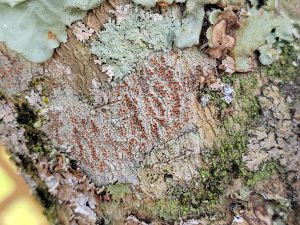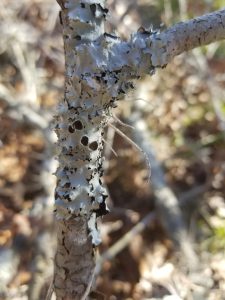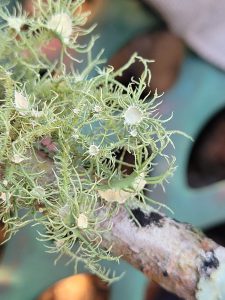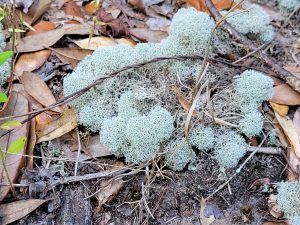Lichen is often misidentified as a fungal issue on plants. They are actually completely harmless organisms and will grow on anything the does not move, they are very slow growing. Lichens are a combination of multiple organisms living in an obligate mutualistic relationship. This means the at least one organism cannot live without each other. Liches are a combination of either an algae, or cyanobacteria (photosynthetic partner) and a few different types of fungi. The photosynthetic partner provides the fungi with food through shared sugars, while the fungi provide a moist environment for the photosynthetic partner to grow in. The fungal partners cannot live without the photosynthetic partners.
While lichen do not harm plants, they can indicate that a plant is not doing well. This occurs when you see large amounts of lichen on a plant while the plant looses leaves. The lichen did not cause the problem. They are reacting to having more light and water with the reduced leaves.
It can be tempting to remove lichen from living plants, but this can seriously harm the plants. Do not pressure was your plants to remove lichen. Remember, they grow on buildings, rocks, fences and very slow growing plant part.
The thallus (the overall structure of the lichen) comes in three main types: crustose, foliose, and fruticose.
Crustose is encrusted on what ever it is growing on. You cannot pull it off even if you tried.

Foliose grow up from the surface with a leafy thalli structure.

Fruticose can grow on trees, shrubs, rocks or it can grow on the ground. When ready to reproduce, some these lichen produce red structures on the ends of their branch like structure.


Read more about Lichens here: https://edis.ifas.ufl.edu/publication/IN1296
More about identification is here: https://natl.ifas.ufl.edu/docs/Lichens_NATL_final.pdf
 4
4
